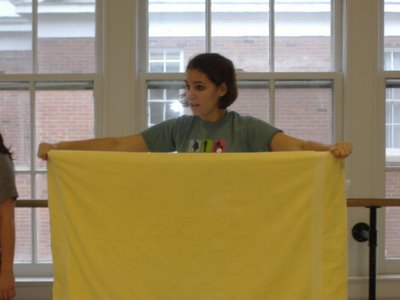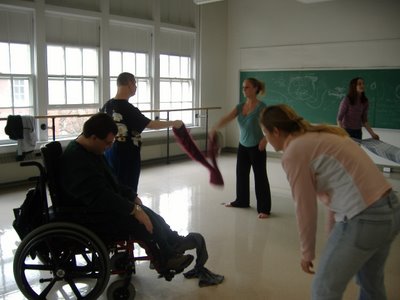You don’t have to take my word for it … (Part IV)
Colleague reflections
I asked my colleagues to reflect on why they consider arts therapies important and what they observe the ATCO participants gaining from their experiences in the class.
Jeff, mentioned previously in this post, works with the ATCO participants every day, including attending every session of our class. He pointed out that the class “hits a lot of areas at once,” providing opportunities for the participants to be actively engaged, move, work their muscles, interact in a group setting, follow directions and provide chances for peer leadership. He also noted that doing something “new,” like traveling to the dance studio or getting the chance to take off their shoes (something that many of the participants also mentioned they liked) is important. Jeff talked about the positive effect the class had on the participants’ self esteem, giving them a sense of enjoyment and accomplishment. He described how one participant showed his signature “move” from dance class in another setting (thoroughly confusing everyone around him!), very proud that he had invented and could execute it. Jeff also recalled seeing the smile on another participant’s face while moving as a “very dear” moment.
Haley, my co-facilitator, captured the essence of the class, describing it as “a special place where [participants] can move their bodies in ways that they aren’t able to anywhere else.” She also talked about sharing the joy of participants when they discover the power and capability of their own bodies, achieving a personal sense of accomplishment. When talking about one of the participants, she said “his smile is so incredible, experiencing the pure enjoyment of how his body can move. I think all of [the participants] have gotten to that place at least once.” Like Jeff, she discussed the value of the social interaction that participants had with each other and with us, noting the support and personal growth it encourages.
Anna, a theater student interested in drama therapy, also highlighted the success of the group’s social interaction. She used the example of Irene gently passing the “baby” (blanket) to Rex during the drama therapy class (my picture of it is below) to illustrate the kindness and compassion the group members show for each other.













